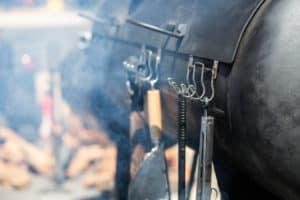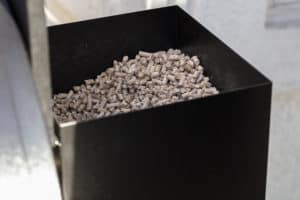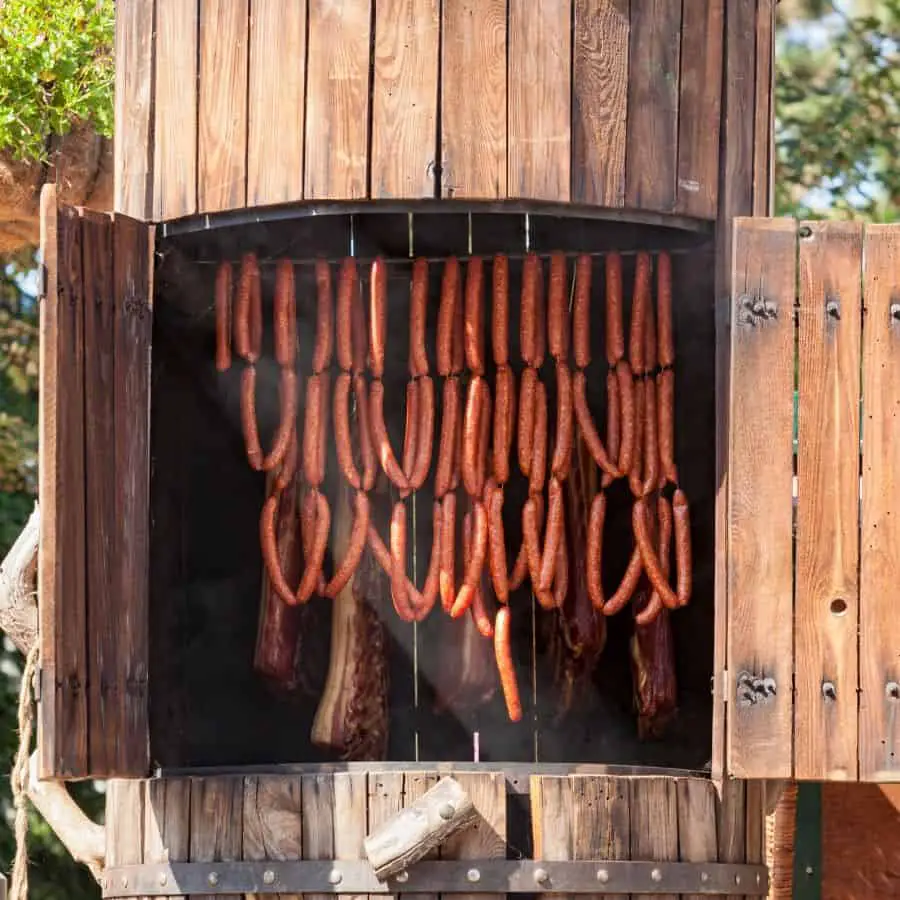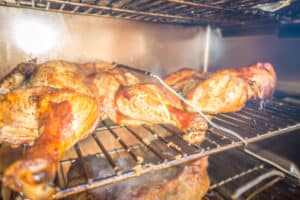The Hot Cook-Off: Is Smoking Meat Better Than Grilling?
Disclosure: This post may contain affiliate links. If you use these links to buy something we may earn a commission at not additional cost to you. Learn more.
Barbecue is a staple of American cooking culture and there are many ways in which people prepare it. Let’s focus on two of the most popular forms of cooking meat: grilling and smoking. People vary in their meat preferences, each method providing different flavor profiles and drastically different processes for cooking. Whether you like one or the other, both can provide different benefits.
Is smoking meat better than grilling? While personal preference is a large factor in smoking over grilling, smoking meat provides much deeper and unique flavoring, enhanced tenderness, and a longer shelf life for consumption compared to grilling. These factors make smoking a preferred method for high quality and delicious meats.
Smoking meat has been a popular method of cooking throughout history, dating back to the early days of fire itself. With a richness in taste and preservation, many prefer the taste of smoked meat over grilled. This article gives you everything you need to know about how smoking versus grilling meat works, the benefits they provide, and how to smoke meat yourself.

Smoking vs. Grilling
Smoking and grilling meat both aim to achieve the same goal through different means: cooking tasty meat. The different methods have an impact on taste, consistency, and desired involvement in preparation.
What’s the Difference?
Smoking meat is a process in which you place meat into an enclosed chamber that heats internally (like an oven) and is flavored by the smoke that builds within. Smoking meat is a longer cooking process that cooks at a lower temperature than grilling. This process is preferred by many for its enhanced flavoring and tenderness.
- “Cold smoking” cooks at lower temperatures for enhanced flavor but does not fully cook the meat.
- “Hot smoking” fully cooks meat while infusing flavor into it.
We will be focusing primarily on hot smoking as it is most comparable to grilling and is the traditional method used in barbecue.
Grilling meat is used to cook food quickly by applying heat directly to the surfaces of the meat. Dry and radiant heat are applied to the meat, cooking the outside and then penetrating to the center with more cook time. Much higher temperatures (up to 500 degrees Fahrenheit) are used to cook the meat faster rather than the slow, cool process used in smoking. Meat juices are sealed into the meat with a charred surface.
The Benefits and Drawbacks of Smoking Meat
Smoking meat comes with its positives and negatives related to taste, shelf life, health considerations, and involvement in the cooking process.
Benefits of Smoking Meat
Smoking meat is appealing to many people, especially in the taste department and its ability to last for longer periods of time.
Flavor
The long cooking process allows flavors to be absorbed into the meat much more effectively than grilling or baking. With lower temperatures requiring longer cook time, the flavors of the seasoning and smoke from the wood can be developed.
The smoking process increases tenderness by breaking down proteins in the meat and melts fat away, keeping the flavors alive. This tenderness cannot be achieved the same way by grilling.
Food Preservation
Smoking removes moisture and dries out the meat. This acts as a natural preservative, allowing the taste of the meat to last longer without contamination. This prevents food waste by allowing you to enjoy the meat for longer as well as maintain deeper flavors.
Safety
The natural preservatives created by smoking meat prevent bacteria and bugs from spoiling it. The removal of moisture and the acidic coating that develops during the smoking process prevents bacteria from entering.
If the bacteria can get beyond the coating, it is difficult for it to survive in the dry meat environment. Smoking meat also ensures that a piece of meat is cooked entirely due to the long cook time.
IMPORTANT: Whether you are grilling or smoking, you should always verify the meat is safe to eat by using a quality meat thermometer.
Health Benefits of Smoking Meat
- Less Artificial Preservatives: When you smoke meat, it is naturally being preserved. This is a great alternative to purchasing meats that are loaded with artificial preservatives and have been linked to diseases.
- Flavoring Leaner Meats: Lean meats may have less flavor than game meats, but a smoker is a great way to add flavor without sacrificing your health. Lean meats promote muscle growth and contain fewer calories and fat. Adding flavor to these can be a better alternative than cooking a fattier meat.
- Avoid Fats and Oils: Because a smoker is used to flavor and cook meat properly, additional fats, oils, and sauces to flavor meat are not necessary. Fat is also melted away in the smoking process, creating a healthier cut of meat.
Minimal Attention
Unless you are using a wood smoker, many smokers do not require a lot of time to be spent watching the meat cook. This is best if you do not particularly enjoy cooking and want to let the smoker do all the hard work for you. The most attention is placed on preparing the meat, and then you can leave it cooking in your smoker for hours with check-ups every once in a while.
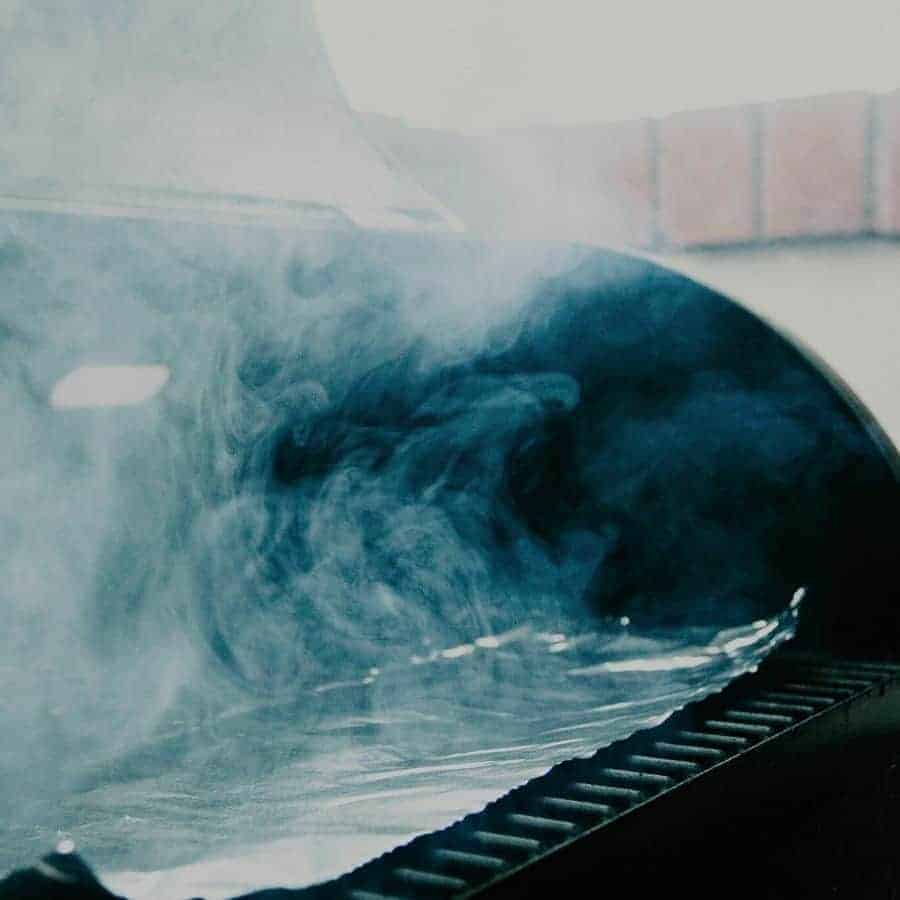
Drawbacks of Smoking Meat
While smoked meat is tasty, it does come with risks in consumption and additional factors that may make smoking less attractive to consumers.
Health Risks
- PAH exposure: Combustion of wood can lead to polycyclic aromatic hydrocarbon (PAH) exposure. These carcinogens are linked to cancer in studies conducted worldwide. Infusing smoke, or burnt wood fumes and particles, into meat has been linked to certain types of cancer (are smoked meats bad for you?) (are smoked meats bad for you?).
- High sodium: Large amounts of salt are used to achieve smoked meat’s tender texture and enhance flavor. Consistent high sodium may present a risk for high blood pressure. This can lead to heart disease and diabetes.
Because of these risks, it is recommended to consume smoked meats in moderation.
Long Process
Smoking meat can be an all-day process and even take multiple days for desired smoking results. Many people do not have time or patience to wait for their meat to cook this way. You can avoid this if you don’t cook it yourself and head to a nearby BBQ restaurant!
Expensive
Smokers, especially ones that are nicer and easier to use, can be expensive compared to other methods of cooking. Smokers are generally more expensive than grills, making them a less desirable option to most of the population.
It is recommended that you use larger and higher quality cuts of meat for smoking to work the best. This can be expensive depending on the meat as well as the quantity that you may not want or need. Wood and charcoal are also an expense that can add up depending on the type.
Temperature Regulation
Temperature regulation and consistency are important to ensure proper cooking. This can be difficult to achieve, especially for those new to smoking.
Water can be used to maintain consistent temperatures. Having the correct amount of water in the smoker helps to regulate with steam. This will need to be checked during the cooking process. Use a thermometer to keep this temperature consistent. Thermometers that are attached to smokers are not always the most accurate. Using a separate one will be helpful to check multiple areas of the smoker for consistency.
The Benefits and Drawbacks of Grilling Meat
Of course, there are plenty of reasons to enjoy grilling meat and reasons to avoid it. I’ve broken down everything you need to know about both the benefits and disadvantages of grilling meat.
Benefits of Grilling Meat
Grilled meat is an easy and convenient way to prepare meat with little preparation or added ingredients. This makes it a fairly healthy option for many cuts of meat as well as other items! If you are looking for speed and ease, grilling may be for you!
Fast Cook Time
At high temperatures, grilling meat allows you to fully cook and prepare your meal in a short amount of time. Fully cooked meat can usually be achieved in a few minutes, a very convenient cooking option. Grilling is best for those who do not have time to smoke but who still want a somewhat smoke-flavored meat.
Versatility
You can grill many types of food more effectively and more quickly than smoking. The short process of grilling can provide a smoke flavor and better cooking results for items such as vegetables, fruits, pizza, and burgers in addition to small and thin cuts of meat. Grilling is typically used for chicken, fish, and cuts of steak.
Easy to Use
With minimal steps to prepare meat and turn on a grill, you do not have to be very experienced to successfully grill a piece of meat. Many are propane-operated, just requiring a gas tank. Temperatures can be monitored by turning flames up or down and using a thermometer.
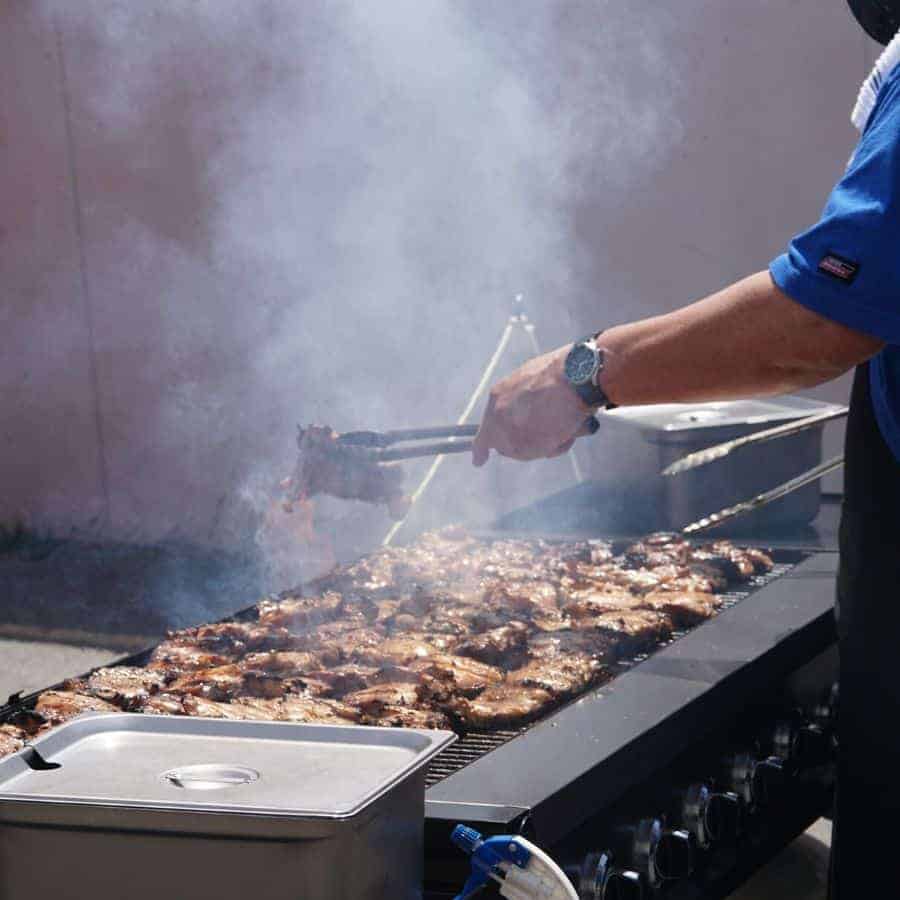
Drawbacks of Grilling Meat
Grilling meat also presents health risks, many similar to those associated with smoking. Any time heat comes in contact with something, the potential charring and burning can produce new chemical compounds that aren’t the best for us.
Health Risks
Cooking foods at high temperatures has been linked to a variety of health risks. Marinating your food can help prevent this, but it remains a risk.
- PAHs: Cooking food over an open flame has been linked to PAHs. Exposure to PAHs has been linked to cancers. While this research is not definitive, it is substantial enough to take note. Consider eating foods made over an open flame in moderation due to these concerns.
- Heterocyclic Amines (HCA): Fat from food coming in contact with flames can create chemical compounds that have been linked to certain types of cancer.
Many of these compounds have been researched as they relate to the adverse impacts and cancers in animals. Continued research needs to be done to see the full impact on humans.
Constant Tending
Because grilling requires cooking at much higher temperatures, it is necessary to watch your meat closely. It can easily burn on a grill as it only takes a few minutes to cook. While it does not require significant skill to grill meat, it does require attention to detail and consistent monitoring to ensure proper cooking and prevent overheating or burning.
Smoking and grilling both have benefits and pitfalls depending on your desired preferences and results for cooking your meat. As far as quality and flavor go, smoking meat is going to be better than grilling in meat preparation.
Smoking Meat
Now that you have an idea of the benefits and risks of smoking meat let’s dive deeper into how smoking works and the steps you need to take to craft the perfectly flavored, tender piece of smoked meat.
History of Smoking Meat
Smoked meat serves a practical purpose in addition to being a meat preparation technique. Smoking was originally used to preserve food before the days of refrigeration and chemical preservatives. This would allow the meat to last longer as moisture was removed from the meat during the cooling process.
This practice dates back to the days of early indigenous people and has been used throughout history to not only protect the meat from bacteria but enhance the flavor. Many Eastern European and Nordic cultures still value this preservation in their everyday diets.
American barbecue employs similar concepts but is defined by its rich flavor and seasonings. The goal is related more to flavor and tenderness rather than preservation.
How Does a Smoker Work?
A smoker is typically a long horizontal-shaped barrel that allows for smoke to flow through the chamber. Consistent temperature throughout is necessary to create an even cooking environment. Smoke is emitted from the heating source and is used to flavor the meat. Charcoal and wood are typically used as a heating source and are burned down to keep temperatures consistent.
Types of Smokers
- Charcoal Smokers: Many pitmasters (those who smoke meat regularly) prefer charcoal for the added flavor it brings to the meat. It is often a less expensive smoker but requires the purchase of charcoal for every use and a fire must be maintained for operation. Use charcoal that has not been treated with lighter fluid to avoid chemical taste and exposure.
- Propane Smokers: Use a propane gas flame to provide heat to the meat. They are fairly straightforward devices that only require a steady supply of propane. Have some extra tanks ready!
- Wood Smokers: Known for their great flavor production, wood smokers make temperature regulation the most difficult and require constant attention. They are typically used by more advanced cooks.
- Pellet Smokers: Wood is used in chips rather than stacked firewood used in a wood smoker. This is much easier to manage as the pellets are placed in a compartment. This tends to be a more expensive type of smoker.
- Electric Smokers: Similar to other electric appliances, these smokers only require the turning of a dial to control internal temperature. Electricity heats up a rod that allows the wood inside to smoke. These are usually the most expensive and provide less flavor than other smokers.
Best Wood for Smoking
Head to the meat section of your grocery store, and you may notice many of these wood types on the packaging. Your packaged bacon can be found in at least half of these varieties. Why does wood matter? Each type of wood provides a different flavor profile used to enhance the meat’s flavor. Here are some of the most popular woods used for smoking meat and what they bring to the table.
- Applewood: Sweet and fruity tones that are typically used for pork, poultry, and sometimes fish.
- Hickory: Strong flavoring best used on red meats, such as ribs.
- Pecan: Fruity and nutty flavor that burns at a lower temperature than other woods.
- Alder: With a milder and sweet flavor, this wood pairs best with poultry, white meat, and fish.
- Maple: Known for its sweetness, it goes best with ham and poultry. It will darken the meat you’re smoking and combines well with alder, applewood, and oak woods.
- Mesquite: Of all the woods, it has the most distinct and overpowering flavor, making it necessary to manage and prepare properly. It is best with smaller cuts of meat that do not require long cook times and mixing with other types of wood. Use in moderation.
- Cherrywood: Typically used on pork and red meat, it goes nicely with oak, hickory, and alder.
- Oak: With subtle flavor, oak is better for large cuts of meat that take a long time to cook. The flavor will appear with the more time spent cooking.
Think of wood as a seasoning. While it is used as a heat source for the smoker, its primary purpose for the meat is taste. Given this, use different types in moderation for desired flavors. Mixing types of wood can create new interesting flavor combinations as well.
Best Types of Meat to Smoke
The best smoked meats are ones that do well being cooked over long periods of time. They will cook more slowly, allowing the flavors to develop from the wood or charcoal used in the smoker. These cuts of meat are typically too tough to be cooked in other ways.
Nicer cuts of meat, such as pork tenderloin or steaks, are better for grilling because they already provide great flavor for cooking in short periods of time. Smoking these types of meat will dry them out and cause them to become inedible.
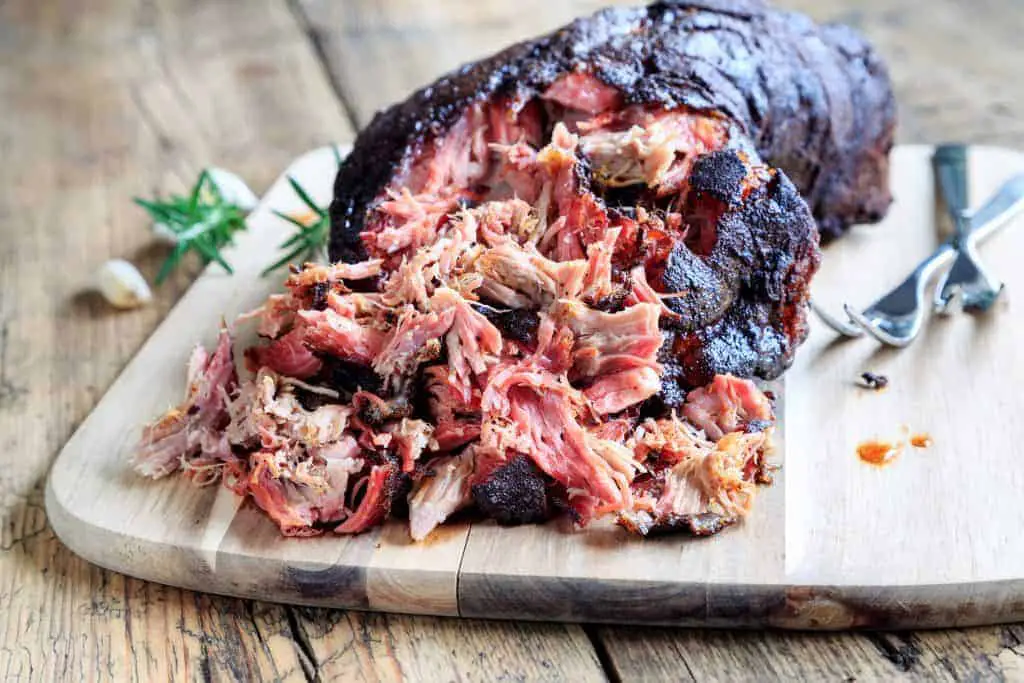
Traditional BBQ Smoking Meats
The best barbecue meats are typically tough and chewy, making them poor choices to be cooked in other ways. Smoking the meat allows the connective tissues and fat that make the meat tough to break down and achieve the desired tender results.
This connective tissue is called collagen. When cooked quickly on high heat, it creates the inedible rubbery fat you may find on some pieces of grilled meat. When cooked at a lower temperature more slowly, it melts away and creates the tenderness that smoked meat is known for.
These are great meats for smoking:
- Beef brisket: Typically the most popular meat to smoke for barbecue, it all comes down to the cut of meat. Having a thick layer of fat and marbling (fat and connective tissue throughout) will yield the best results. The more the piece of meat bends when held, the more tender it will be once cooked. Brisket is usually seasoned with a rub.
- Ribs: Smoking pork or beef ribs creates the “fall off the bone” result people desire. Using a rub beforehand, and smoked ribs will make a great finger food packed with lots of flavor. You can serve them dry or lather them in sauce once fully cooked.
- Pork Shoulder: Having a high fat content makes pork shoulder great for smoking slowly. This will result in moist and tasty meat that does not always need additional seasoning.
How Do You Smoke Meat?
When talking about smoking meat as it relates to barbecue, pit masters aim to achieve a flavorful, tender cut of meat that “falls off the bone.” Preparation is key in achieving this perfect piece of meat.
- Choose Your Smoker: Based on how involved you want to be in the cooking process and the flavors you hope to achieve, choose your smoker based on these considerations.
- Select Your Cut of Meat: Use larger cuts of meat as they are best cooked for long periods of time at lower temperatures. The best meats are tougher with lots of connective tissue and fat that will melt, creating the desired tenderness.
- Select Type of Wood: Choose the type of wood you want based on desired flavors and meat type.
- Prepare Meat: Depending on your style and preference, you should either season the meat with a rub, soak it in a marinade, or brine your meat. All of these techniques will enhance the flavor and texture.
- Heat Smoker: For hot BBQ smoking, temperatures should remain between 200-220 degrees Fahrenheit (94-104 Celsius) throughout the entire cook. If using charcoal or wood, let the materials burn down, so the meat is not placed over a high flame or direct heat.
- Maintain Temperature: Temperature can be controlled with added water for moisture. If you choose to add water, make sure this container is full throughout the day of cooking.
- Be Patient: We have a tendency to check on food and flip it to make sure everything is cooking. When smoking, let it be! Give it the necessary hours to “do its thing.” Be patient as this is a long and slow process that is best left alone.
- Four Hours In: Check on your meat. For ribs, they should be slightly limp, but without splitting or breaking. If they split, you’ve overcooked (which will still be tasty) or if the meat is bouncy when you move it on an oven mitt (give it another hour).
- Slather and Enjoy: Load up your desired BBQ sauce for ribs or enjoy the crispy outside of your tender brisket. Once they come out of the smoker, they are ready to enjoy!
Brining Meat vs. Using a Rub
People prepare their meat differently based on taste and tradition. Some believe one method works better than the other, but both help to achieve a flavorful and tender piece of meat.
Brining is the process of soaking your meat in a salt-based solution often with spices. The meat is able to absorb the salt, which keeps your meat from drying during the smoking process. The presence of more salt in the meat cells allows moisture to be retained.
There’s a fair amount of chemistry and science involved in good smoking! You typically brine your meat for 10 or more hours before smoking. Some people choose not to brine because the meat could get too salty.
Other people prefer to use a rub for their meat. Massage your desired herbs and spices all over the cut of meat to introduce new flavors. Rub recipes vary from pitmaster to pitmaster, but usually include salt and pepper and then any desired flavors they hope to incorporate. Rubs are very popular on briskets.
“Good” smoked barbecue is not solely due to the brine, marinade, or rub. The flavors from the wood (a major seasoning element) and the cooking process are huge contributors to the final product. You want to be able to taste the meat flavor that took so long to develop!
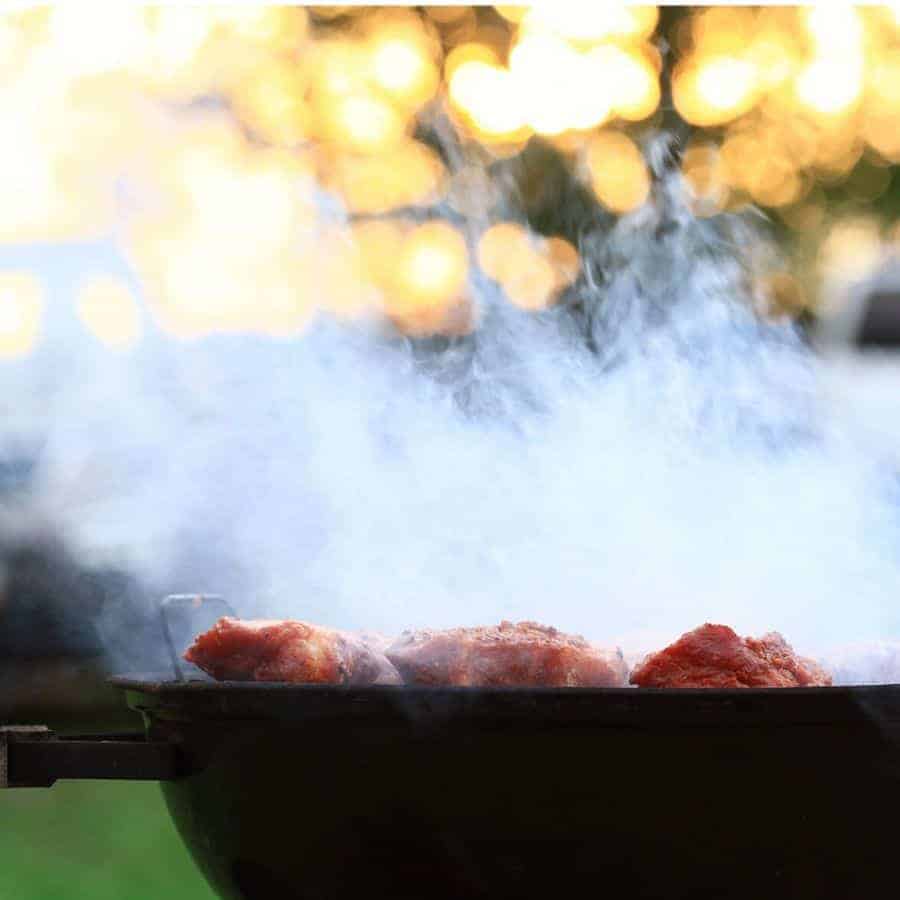
Why Smoking Meat is Better Than Grilling
Doesn’t reading all that make you hungry? If you ask an experienced pitmaster, you’ll realize that they treat smoking meat as an art. It may be a long and slow process, but people do say that “good things come to those who wait.”
While you may get a tasty piece of meat off the grill, you won’t be able to achieve the smoky, rich, unique flavoring that smoking meat can achieve. The tenderness alone is hard to achieve on a grill for the issues we’ve talked about.
If flavor is your number one priority in eating a piece of meat, smoking meat will produce a superior piece of meat. If you don’t have the time or supplies to smoke your own meat, barbecue restaurants all over the country have concocted their special recipes for moist and tender meats packed with flavor.


